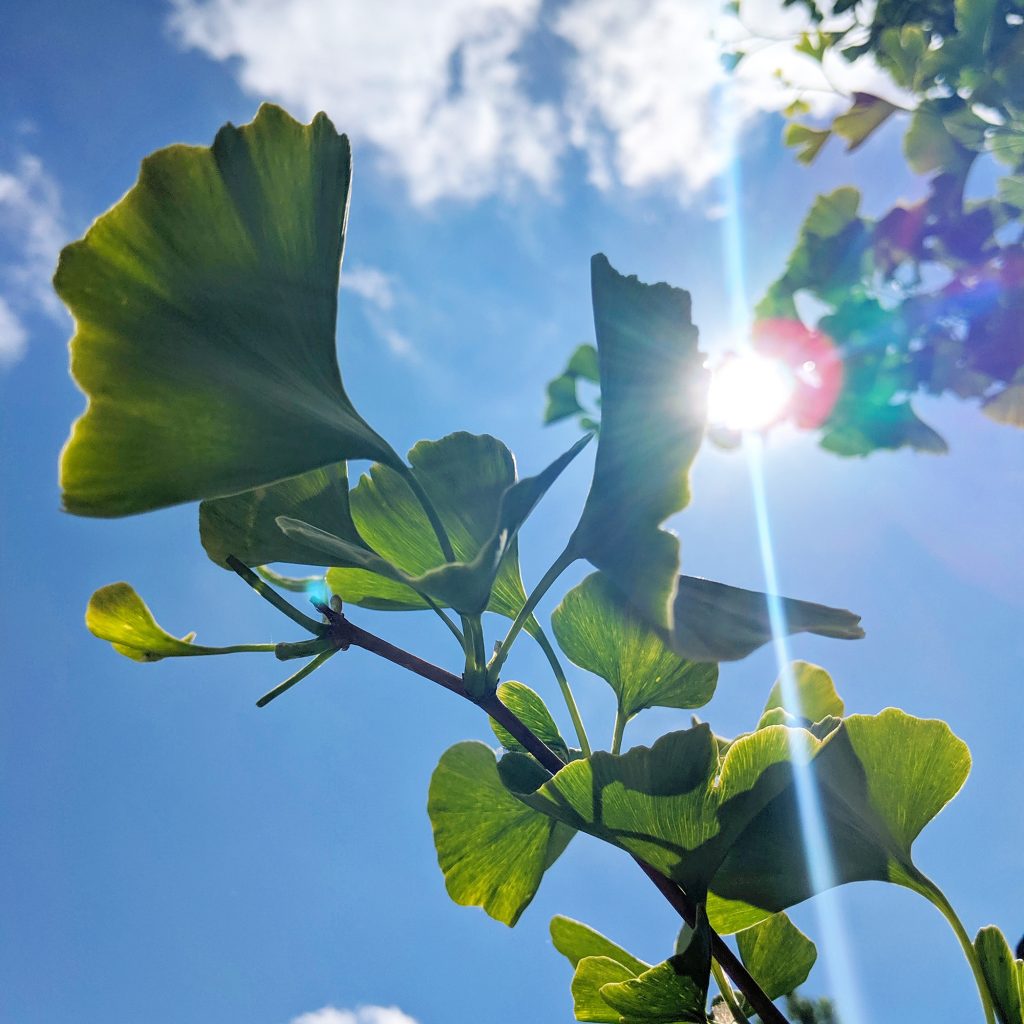You can also have a look at the family learning resources that the Horniman Museum has developed for the Urban Tree Festival here. Among other activities, will find a family-friendly trail to help you discover the mysteries, myths and magic of some of the trees in our Gardens.
My friend is a tree
Go to a local park, close your eyes and ask someone in your family to take you to a tree.
Get to know the tree through touch and smell. Feel the bark, find the branches, smell the leaves!
Hug the trunk – can your arms reach all the way around the trunk? How big do you think it is?
Keep your eyes closed and let your family know you are finished exploring and ask them to take you back to where you started.
Open your eyes. Now try and find the tree you were exploring with your eyes shut.
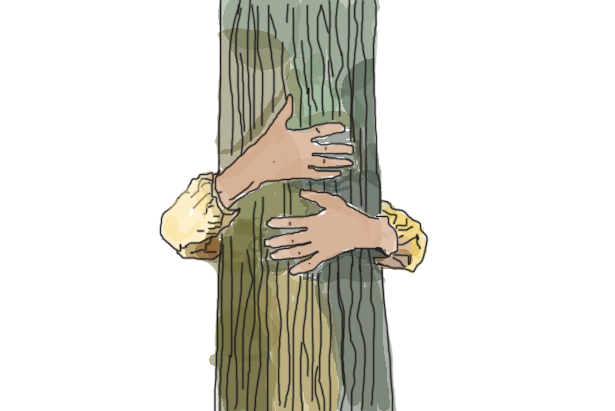
Look through your legs to measure a tree
Turn your back to a tree and walk away from it for at least 10 steps. Now bend over, like you’re touching your toes, and look between your legs at the tree.
Can you see the top of the tree? If you can’t, keep walking away, and stop every 10 steps or so until you’re able to see the top of the tree.
Once you can see the tree from the top to the bottom, looking through your legs, STOP. Now turn around and walk back towards the tree, counting how many steps or paces you need to take to reach it. This is how tall the tree is – more or less!
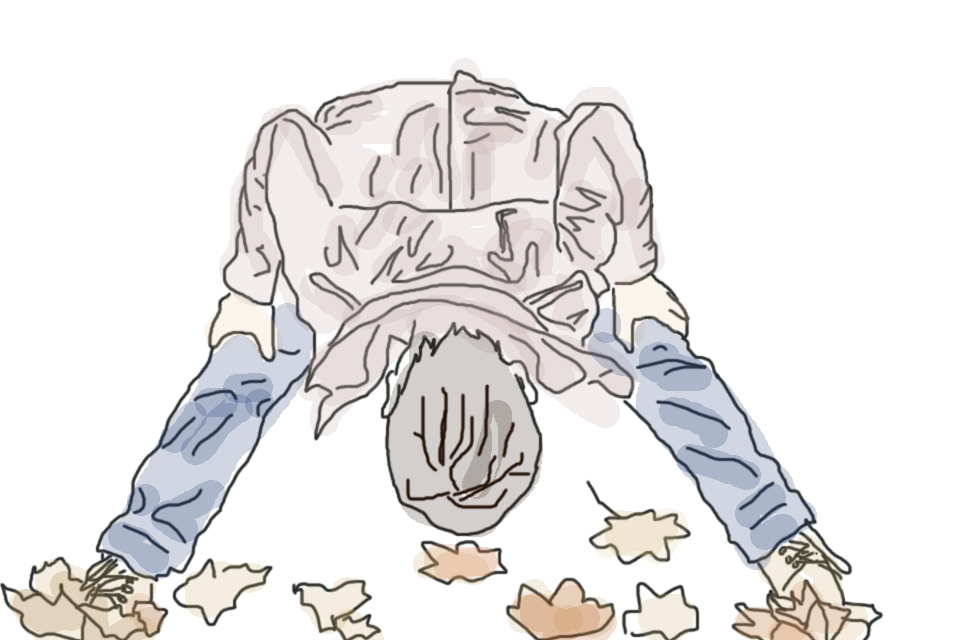
Mini-challenge
Can you find a really old tree in our Gardens? Is it taller or shorter than some of the younger ones?
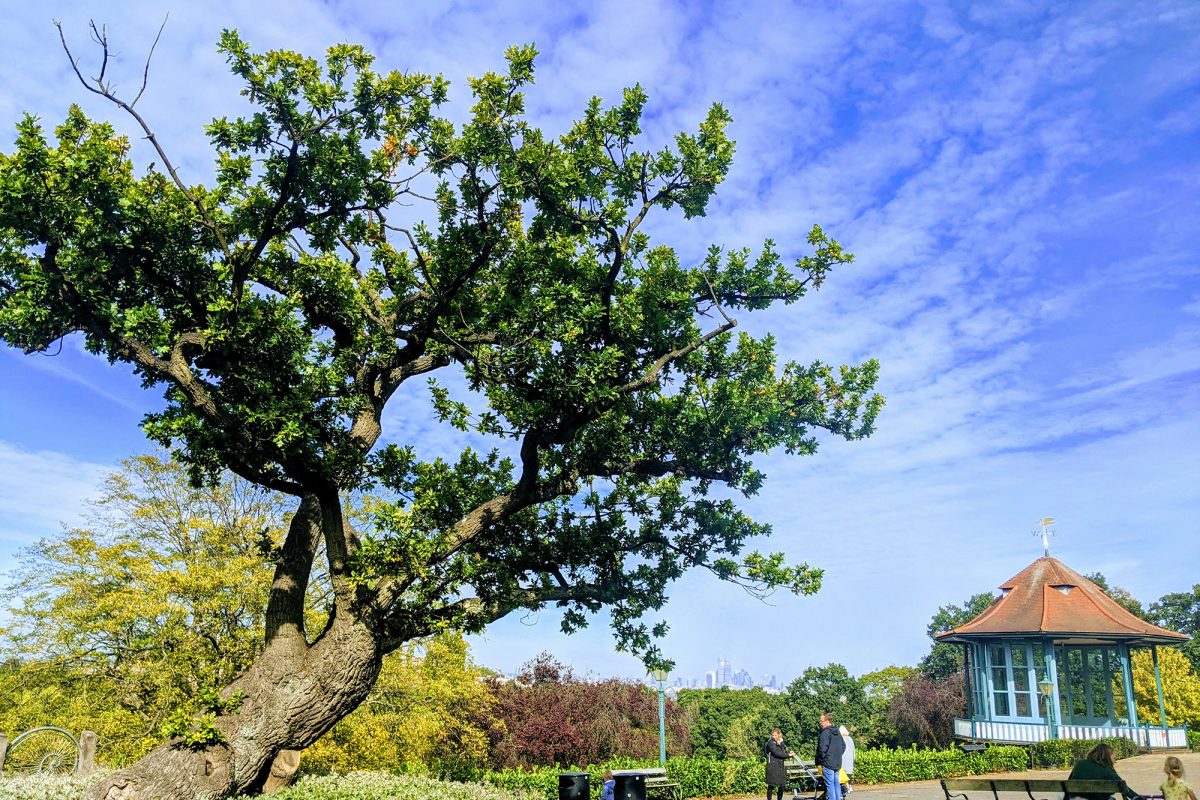
Absolutely Barking
Bark develops over time as a tree ages. Young trees sometimes have smooth bark that’s unbroken by ridges. But some kinds of trees keep their smooth, unbroken bark throughout their whole life.
Take a closer look at the appearance, texture, markings and colour of the bark of different trees. Can you find the following examples?
Lichen on tree bark is completely harmless to the tree itself. Lichen loves sunlight and moisture, so it is often found in sunny, wet spots.

Some mushrooms can be harmful to trees. They can cause heart decay, which causes healthy trees to begin to rot at the heart of the trunk.
Some other mushrooms can be vital to tree health. They can form partnerships with roots of living trees and the resulting fungus-root is called a mycorrhiza. The mushroom absorbs water and minerals for the tree, but in return, the tree gives the mushroom nutrients too.
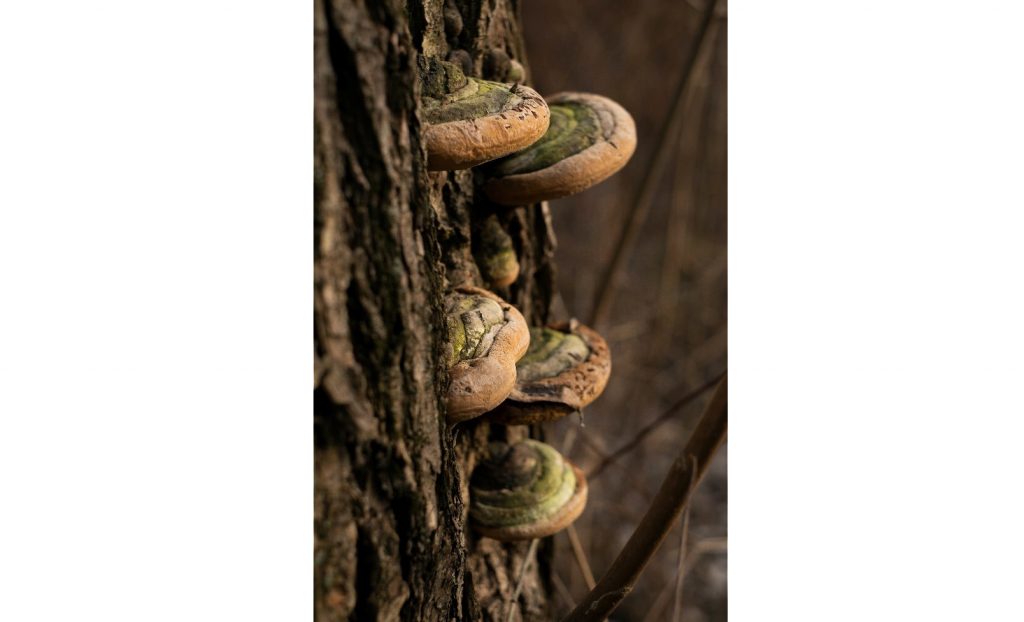
Remember some mushrooms can be poisonous, so don’t touch a mushroom unless you are absolutely sure that it is safe to do so.
These lines, also called lenticels, work as pores that allow gas exchange between the tree and the air.
If you run your hand across the bark you will feel that they are rougher and often slightly raised above the surrounding bark.
They are usually found on trees with smooth, non-porous bark like birches and cherries.


These are actually gaps in the bark’s outer layers, called the rhytidome.
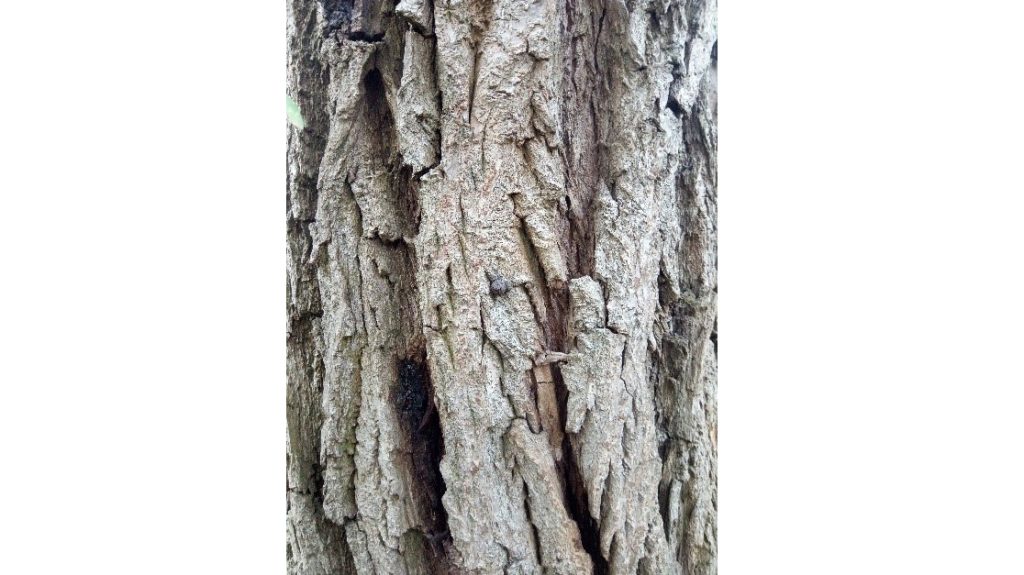
Many different insects such as beetles and moths tunnel and feed under the bark in living wood. These insects sometimes munch their way across the bark, leaving squiggly lines behind.

As a tree grows, its lower branches tend to die and fall off. Knots are like tree blemishes that reveal exposed wood.

As a tree grows, the layer of bark thickens and the old, dead bark falls off.
During the Industrial Revolution (mid-late 1800s) London was black with soot and smoke. The Victorians came up with a clever idea to plant lots of trees to help fight pollution. This tree was the London plane, as the tree’s bark flakes off and gets rid of pollutants that could stop air reaching its trunk.
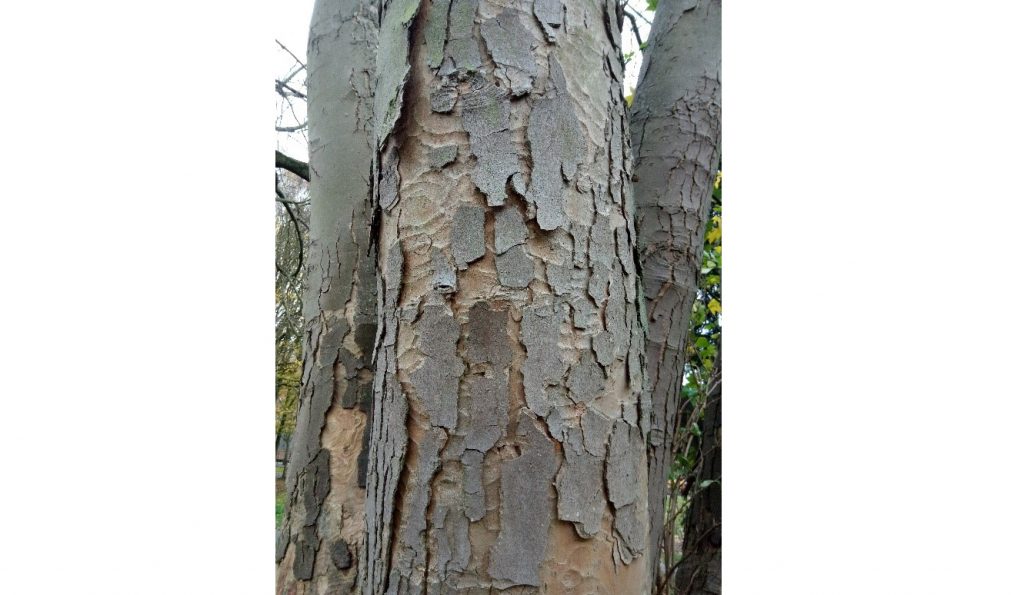
Mini-challenge
You can use the Tree ID app to identify the trees you have explored and find out more about them.
Become a bark artist
Choose your favourite tree that has interesting bark.
Press a sheet of paper against the bark and hold it in place.
Rub your charcoal, pencil or crayon over the paper. You’ll need to press firmly. When the pattern has come through, you can move the paper.
Ta-dah! You’re a brilliant bark artist!
Mini-challenge
Experiment with different trees, then take a look at the bark rubbings to see how they compare.
Did you know?
More than half of Europe’s native trees are threatened with extinction due to diseases, pests, pollution and urban development. Ash, Elm and Rowan trees are among those in decline.
The Museum’s current tree-planting programme includes rare and endangered trees.
This Wollemi pine is a very special tree. It is the only species left of an ancient type of tree that grew over 65 million years ago when dinosaurs walked the earth.
For a long time, this species was thought to have been extinct – but in 1994 a population was discovered in a remote location in Australia, which is kept top secret.
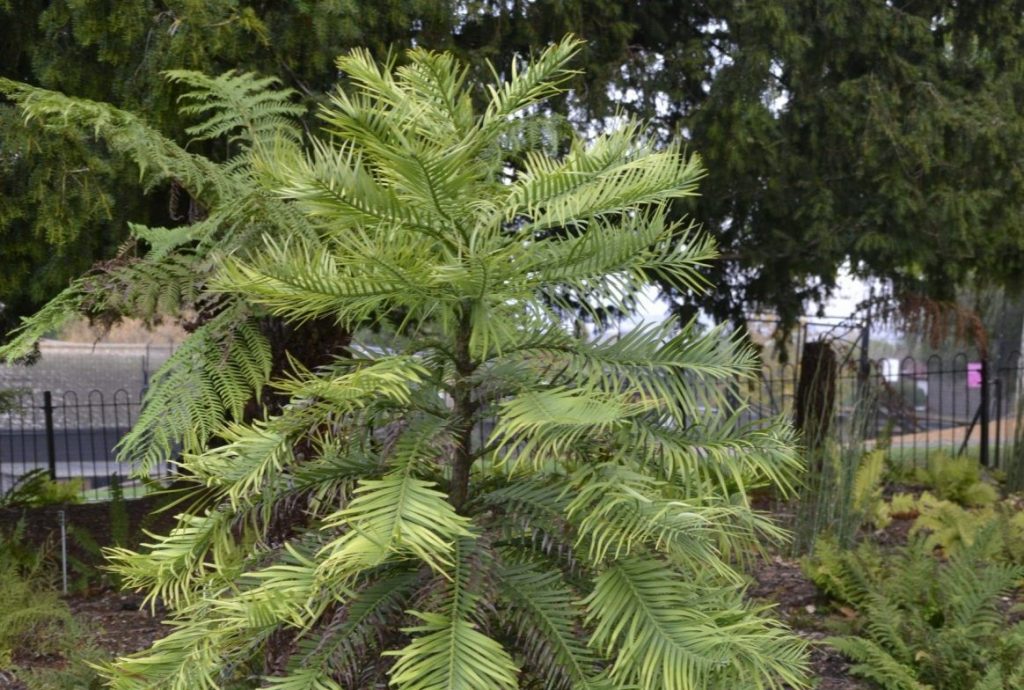
Ginkgo trees are ‘living fossils’ and have been around for millions of years, dating back to the Permian period. Ginkgo has very pungent fruit described as butter that has gone off, dog poo or vomit. Yikes!
They are native to China but can be found all over the world now, including our Gardens.
They are considered to be an endangered plant species.
